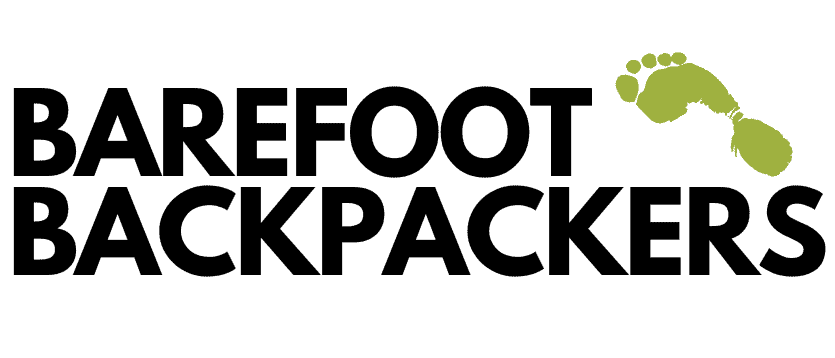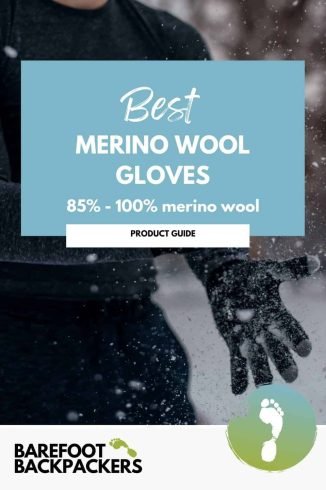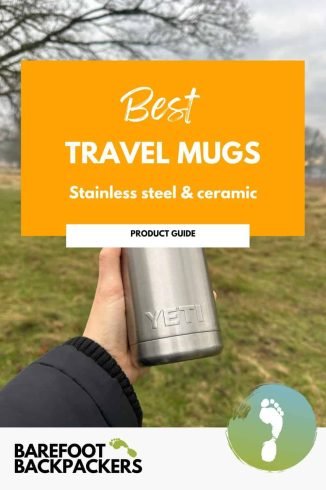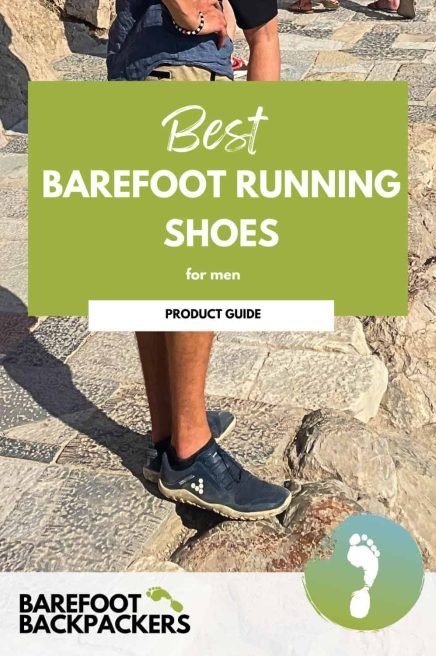If you are on the hunt for the best mens barefoot shoes for running, we can sort you out. Whether you’re tackling rugged trails or jogging through city streets, barefoot shoes offer a natural, responsive, and grounded experience. These shoes are designed to strengthen your feet, improve running form, and connect you to the environment with every step. At Barefoot Backpackers, we’ve rounded up the best barefoot running shoes for men to meet the demands of both trail and city running.
Barefoot shoes for running promote a forefoot or midfoot strike, reducing impact on your knees and encouraging better posture. They’re lightweight and compact, making them easy to pack for your next adventure. Plus, modern designs ensure they blend seamlessly with any outfit, whether you’re hitting the trails or running errands in the city.
Unlike traditional trainers that restrict natural foot motion, barefoot running shoes allow your feet to move freely and strengthen over time. They promote proper biomechanics, reducing impact on joints and encouraging a more efficient stride. For men who train outdoors, whether on trails, tracks, or pavements, the right barefoot shoe can make a world of difference in performance and comfort.
At Barefoot Backpackers, we value both performance and sustainability, and select brands we know and trust. Whether it’s a barefoot hiking shoe for adventures, a running shoe for gym training, or everyday wear, here are our top picks.

This blog is supported by the community. We may earn a small commission if you choose to purchase through our links, which allows us to keep creating content. As an Amazon Associate, we earn from qualifying purchases. Learn more.
The Best Barefoot Running Shoes at a Glance
- Best Barefoot Running Shoe: Vivobarefoot Primus Lite Knit – Lightweight knit design with superior breathability and flexibility.
- Best All-rounder: Vivobarefoot Primus Lite III – A versatile minimalist shoe for training, running, and daily wear.
- Best Barefoot Trail Shoe: Xero Shoes Mesa Trail II – Rugged barefoot runner with grip and ground feel backed by a 5,000-mile warranty.
- Best Ground Feel: Merrell Vapor Glove 5 – Minimalist trainer with eco-friendly materials and maximum connection to terrain.
- Best Athleisure Option: Xero Shoes Nexus Knit – A barefoot-inspired shoe blending performance with casual everyday wear.
- Best Toe Separation Design: Vibram FiveFingers V-Trail 2.0 – Individual toe compartments and rugged protection for adventurous trail running.
- Best Budget Barefoot Shoe: Saguaro Wish I – Affordable, flexible, and breathable barefoot shoe ideal for first-time users.
- Best Budget Trail Runner: WHITIN Minimalist Trail Runner – Zero-drop, wide toe box, and durable sole at an unbeatable price.
Best Barefoot Running Shoes for Men 2025
The Primus Lite Knit is a lightweight and highly flexible barefoot trainer designed for natural movement. Its breathable knit upper is crafted from recycled plastics, making it both eco-friendly and performance-driven. With a wide toe box and zero-drop sole, it encourages natural posture and agility, making it ideal for gym training, short runs, and everyday wear.
The shoe features a 2mm Primus sole with Pro5 puncture resistance, offering a barefoot feel while protecting against sharp surfaces. At just 246 g per shoe, the Primus Lite Knit is a perfect balance of comfort, sustainability, and barefoot freedom.
Key specs
Weight 246 g (average)
Thickness 2 mm sole with 0.8 mm Pro5 puncture-resistant layer
Sole Primus outsole with wide toe box design
Upper Flexible knit made from recycled plastics
Insole Active Ortholite made from 98% recycled PU foam
The Primus Lite III is Vivobarefoot’s hero minimalist trainer, designed to handle everything from gym workouts to road runs and casual wear. With its zero-drop sole, wide fit, and breathable construction, it encourages natural biomechanics and strengthens your feet with each step.
Remade with sustainable materials, the Primus Lite III reflects Vivobarefoot’s commitment to lowering its environmental impact. Lightweight, versatile, and highly comfortable, it’s one of the most well-rounded barefoot shoes available.
Key specs
Weight Lightweight minimalist build
Sole Zero-drop Primus sole with Pro5 puncture resistance
Upper Breathable mesh textile with synthetic overlays
Sustainability Constructed from recycled and eco-friendly materials
The Mesa Trail II is designed for runners who want barefoot freedom without sacrificing protection on rugged trails. Built with a wide toe box and zero-drop sole, it promotes natural foot splay and posture, while still delivering the grip and durability needed for outdoor adventures.
Its breathable mesh upper with welded overlays ensures long-lasting performance, while dual chevron lugs provide traction on uneven terrain. Backed by Xero’s 5,000-mile sole warranty, the Mesa Trail II is built for endurance.
Key specs
Weight Lightweight trail runner build
Sole Flexible barefoot sole with dual chevron lugs
Upper Breathable mesh with welded overlays
Support Internal tension strap system for secure lockdown
Warranty 5,000-mile sole guarantee
The Vapor Glove 5 offers one of the closest-to-barefoot experiences available, thanks to its ultra-thin and flexible design. Its zero-drop sole provides unparalleled ground feel, making it a favourite among minimalist runners who want maximum connection with the terrain.
Eco-friendly construction is at the heart of this shoe, with recycled laces, lining, and top sheet. Lightweight and easy to wear, the Vapor Glove 5 is an excellent choice for runners seeking a stripped-back barefoot trainer.
Key specs
Weight Ultralight barefoot trainer
Sole Thin zero-drop outsole for maximum ground feel
Upper Mesh and TPU with recycled content
Lining 40% recycled mesh lining
Insole EVA foam with 100% recycled top sheet
The Nexus Knit combines barefoot performance with casual style, making it a versatile option for everyday wear. Its wide toe box and zero-drop sole encourage natural movement, while the stretch knit bootie construction makes it easy to slip on and off.
Welded overlays add protection and durability, and the dual chevron outsole is backed by Xero’s 5,000-mile warranty. Whether you’re heading to the gym or strolling through the city, the Nexus Knit delivers barefoot comfort with a stylish edge.
Key specs
Weight Lightweight knit build
Sole Flexible barefoot sole with dual chevron traction
Upper Breathable stretch knit bootie design
Durability Welded overlays for added protection
Warranty 5,000-mile sole guarantee
The V-Trail 2.0 offers a unique barefoot experience with its individual toe compartments, allowing full mobility and natural splay. It’s built for trail runners who want the closest feel to barefoot running while still having rugged protection.
Featuring Vibram’s 3D Cocoon mesh in the outsole, it disperses impact from rocks and roots across the foot for comfort and durability. The improved water-repellent upper also enhances performance in wetter conditions, making it ideal for off-road running.
Key specs
Weight Minimalist barefoot trail shoe
Sole Vibram sole with 3D Cocoon mesh protection
Upper Water-repellent and seam-resistant upper
Fit Individual toe compartments for natural movement
The Saguaro Wish I delivers excellent value for runners seeking an entry-level barefoot shoe. With its wide toe box and zero-drop design, it encourages natural foot posture while remaining affordable and accessible.
Its breathable mesh upper keeps feet cool, while the anti-slip rubber sole ensures traction across different surfaces. The shoe includes a removable insole for a more customised barefoot feel, and it comes packaged in a reusable eco-friendly canvas bag.
Key specs
Weight Lightweight and flexible barefoot shoe
Sole 6 mm anti-slip rubber outsole with 3D texture
Upper Breathable mesh with suede microfibre patches
Fit Wide toe box and zero-drop sole
Insole Removable insole for versatility
The WHITIN Minimalist Trail Runner combines affordability with durability, making it a standout value option for barefoot enthusiasts. Its zero-drop platform and wide toe box encourage natural running mechanics while reducing strain on joints.
The removable sockliner allows for a more barefoot-like feel, while the durable rubber outsole provides reliable grip across trail environments. Vegan-friendly materials and multiple design options make it both ethical and versatile for everyday use.
Key specs
Weight Lightweight trail runner
Sole Durable rubber outsole
Upper Vegan-friendly construction
Fit Wide toe box with zero-drop platform
Insole Removable sockliner for adjustable barefoot feel
What is the Difference Between a Running Shoe and a Barefoot Running Shoe
Traditional running shoes typically feature a cushioned midsole, a raised heel, and a structured upper that guides the foot into a set movement pattern. These features often come with a heel-to-toe drop (commonly 8–12mm), which encourages heel striking and reduces ground feedback. While cushioning can feel protective, it can also weaken intrinsic foot muscles over time and restrict natural biomechanics.
A barefoot running shoe, by contrast, has a zero-drop sole, meaning the heel and forefoot sit at the same height. This encourages a midfoot or forefoot strike and promotes natural Achilles tendon loading. The toe box is also wider, allowing the toes to splay and stabilize the body during each stride. Instead of layers of cushioning, barefoot shoes use thin, flexible soles (often 3–6mm) that provide proprioceptive feedback, helping the runner adapt to terrain and improve posture.
What is the Difference Between a Barefoot Running Shoe and a Barefoot Trail Running Shoe
Barefoot running shoes designed for the road or gym are typically lighter, with thinner soles focused on flexibility and ground feel. They are made for smoother terrain, where traction demands are minimal, and the emphasis is on natural gait and lightweight performance.
Barefoot trail running shoes, on the other hand, incorporate specific features for rugged environments. They usually have deeper lug patterns for grip on mud, gravel, and rocky trails, along with reinforced uppers to resist abrasions from roots or debris. While they maintain barefoot principles such as a zero-drop sole and wide toe box, trail versions often balance ground feel with added protection, sometimes including rock plates or abrasion-resistant overlays. This ensures safety and stability while preserving the natural mechanics of barefoot running.
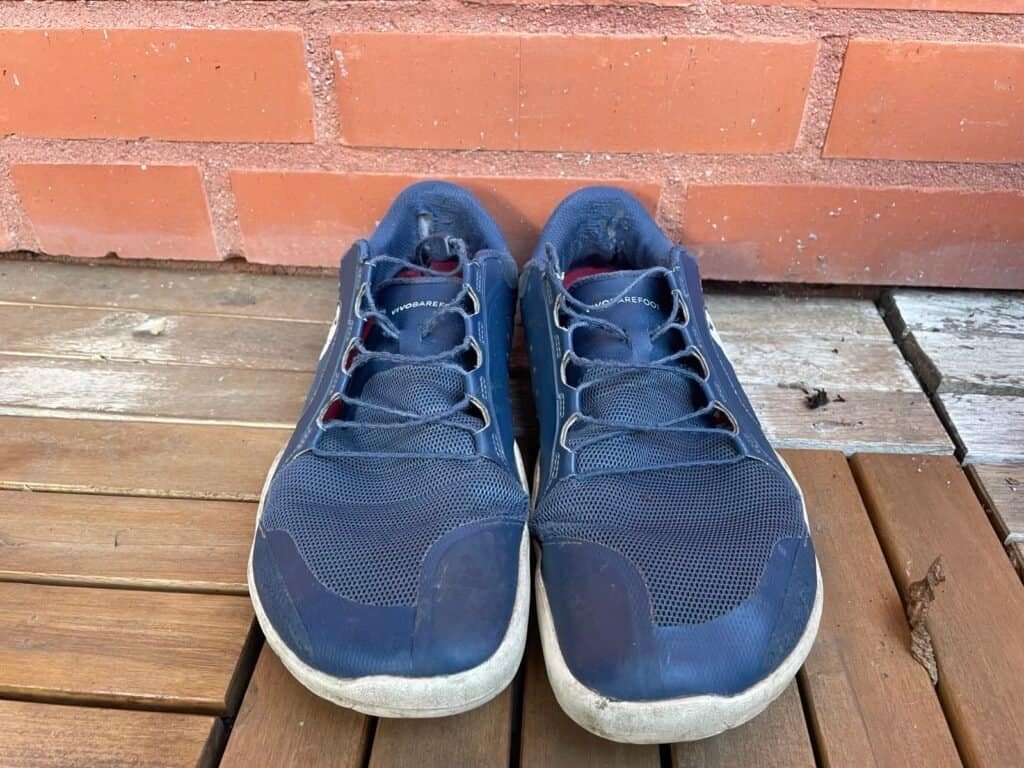
What to Consider When Choosing a Barefoot Running Shoe
When selecting a barefoot running shoe, the most important factor is the sole. Look for a zero-drop platform that keeps the heel and forefoot aligned, with a thin but durable sole that allows sensory feedback while still protecting against sharp objects. A flexible sole that bends with your foot is essential for natural gait.
Toe box shape is another key consideration. A true barefoot shoe should have a wide anatomical toe box, giving your toes room to splay and stabilize your stride. Materials also matter — breathable mesh or knit uppers are ideal for road running, while sturdier synthetics or TPU overlays work best for trails. Finally, consider grip: flat rubber soles are fine for roads and gyms, but aggressive lug patterns are necessary for trail runs. Matching the shoe’s build to your environment ensures both comfort and performance.
FAQs:
Are barefoot running shoes good for beginners?
Yes, but beginners should transition gradually to strengthen foot muscles and adjust to the lack of cushioning. Start with short runs or gym sessions before building up distance.
Do barefoot running shoes prevent injuries?
They can help reduce certain injuries linked to poor biomechanics, such as shin splints, but they are not a guarantee. Proper running form and gradual adaptation are key.
Can barefoot shoes be worn every day?
Absolutely. Many models are designed for everyday wear, and using them daily can help improve posture, strengthen feet, and encourage natural movement.
How long do barefoot running shoes last?
Most barefoot shoes last between 300–500 miles, depending on terrain and usage. Trail models with thicker lugs may wear faster on hard pavement.
What socks should I wear with barefoot running shoes?
Thin, minimalist socks or toe socks are best, as they preserve the barefoot feel while adding a layer of comfort and reducing friction.
Enjoyed our guide? Read more
7 Best Barefoot Sandals for Men 2025
Barefoot Shoes with Toes
Best Ultralight Backpacks for Hiking
